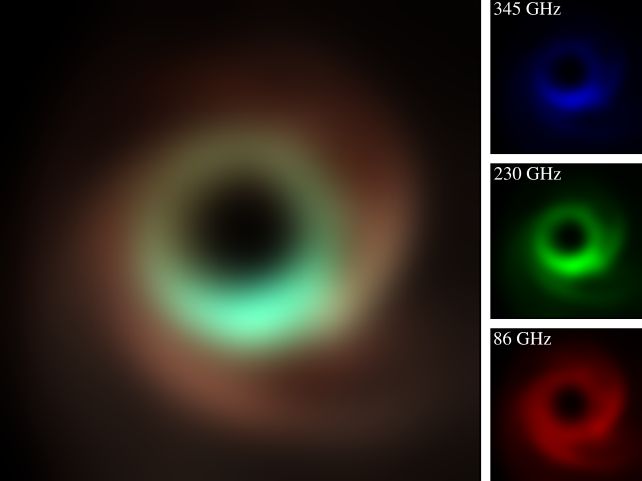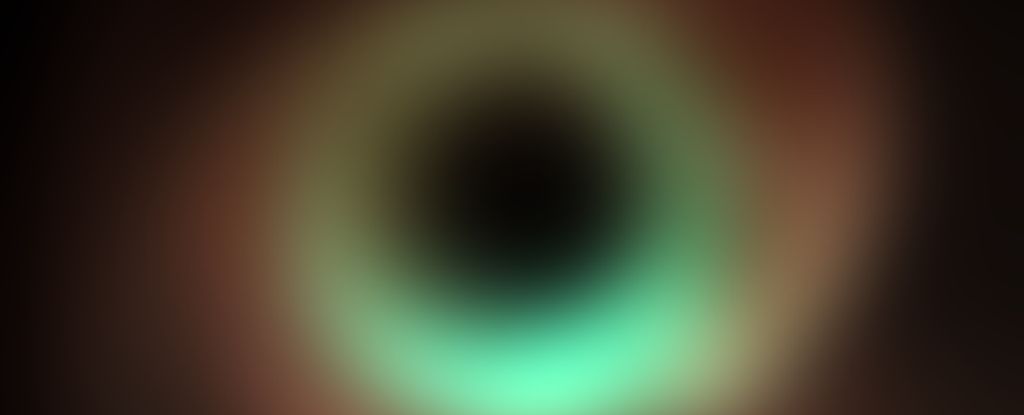In test images of distant galaxies, an array of Event Horizon Telescopes has achieved the highest resolution observations ever taken from Earth.
It’s an achievement that places within our grasp even more spectacular images of supermassive black holes, offering future improvements that are 50 percent more detailed than the images obtained to date – those of M87*, a supermassive black hole 55 million light-years away, and Sagittarius A* (Sgr A*), the supermassive black hole at the center of our own galaxy.
Taken using just a few of the telescopes that make up the Event Horizon Telescope (EHT) array, the new observations haven’t resulted in any new images. For that, the full might of the entire array is required.
But the experiment has succeeded in observing the Universe in the finest resolution ever attained from Earth’s surface, detecting far distant infrared light at a relatively higher frequency of 345 GHz, which has a wavelength of just 0.87 millimeters.
“With the EHT, we saw the first images of black holes using the 1.3-millimeter wavelength observations, but the bright ring we saw, formed by light bending in the black hole’s gravity, still looked blurry because we were at the absolute limits of how sharp we could make the images,” says astrophysicist Alexander Raymond of NASA’s Jet Propulsion Laboratory.
“At 0.87 mm, our images will be sharper and more detailed, which in turn will likely reveal new properties, both those that were previously predicted and maybe some that weren’t.”
The images of M87* and Sgr A* are the product of a technique called very long baseline interferometry, or VLBI, involving not one but many radio telescope arrays around the world, all working together with synchronized precision.
Combining numerous arrays effectively results in a collecting-area the size of Earth; the more telescope antennas used, the more detailed the resulting data. But with that many telescopes, there is a lot of data – sorting through it, analyzing it, and processing it to produce an image of the event horizon of a black hole is a monumental task. Between the data collection and the analysis and processing, each image takes dedication, time, and labor.
Nevertheless, the images themselves are still quite blurry, and there are only two ways to improve the resolution. The first is to increase the size of the telescope. That’s not going to happen in a hurry – the EHT is already Earth-sized. The other is observing at a higher frequency.
frameborder=”0″ allow=”accelerometer; autoplay; clipboard-write; encrypted-media; gyroscope; picture-in-picture; web-share” referrerpolicy=”strict-origin-when-cross-origin” allowfullscreen>
This latter option is much more attainable, but not without its challenges. For example, water vapor absorbs waves at 0.87 millimeters much more than it does at 1.3 millimeters, resulting in much higher atmospheric opacity at that wavelength. Previous 0.87-millimeter observations have required the use of a space telescope, which doesn’t have the Earth-sized collecting area of the EHT.
The EHT collaboration has developed a way to correct for the effects of water vapor in the atmosphere that improves the efficiency of the array, and allows 0.87-millimeter observations to be taken from the surface of Earth.
The new observations promise a resolution equivalent to observing a bottle cap on the Moon from Earth, which means we may be able to see smaller, fainter, and more distant supermassive black holes.
The observations also mean we could soon be seeing multi-color views of the hot, roiling material that swirls around these cosmic behemoths, by imaging in both the 1.3-millimeter and 0.87-millimeter wavelengths simultaneously.

“To understand why this is a breakthrough, consider the burst of extra detail you get when going from black and white photos to color,” says astrophysicist Sheperd ‘Shep’ Doeleman of the Harvard & Smithsonian Center for Astrophysics and the Smithsonian Astrophysical Observatory.
“This new ‘color vision’ allows us to tease apart the effects of Einstein’s gravity from the hot gas and magnetic fields that feed the black holes and launch powerful jets that stream over galactic distances.”
We’re very close to learning so much more about black holes than we’ve ever been able to before. Watch this space – epic science lurks on the event horizon.
The research has been published in The Astronomical Journal.





